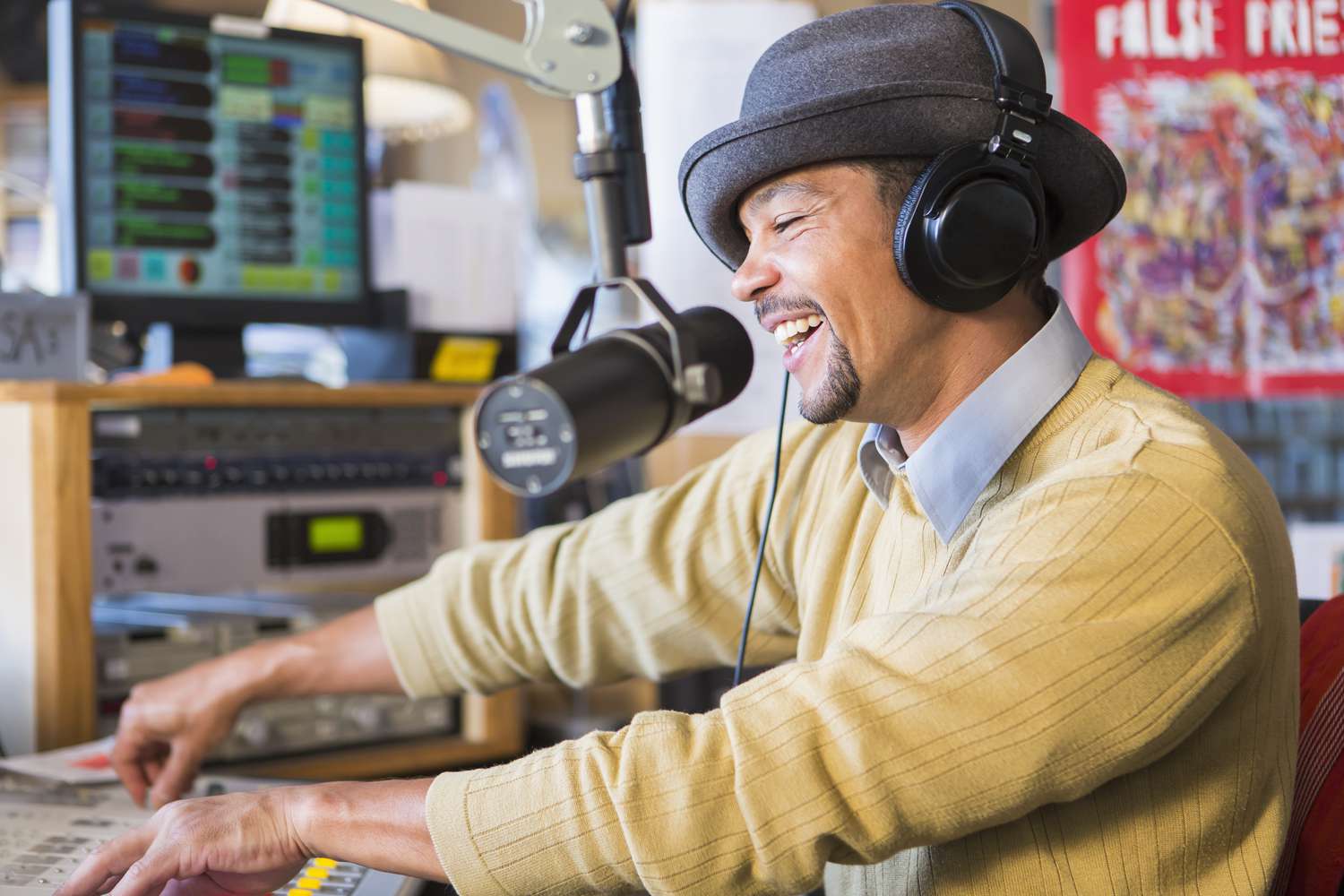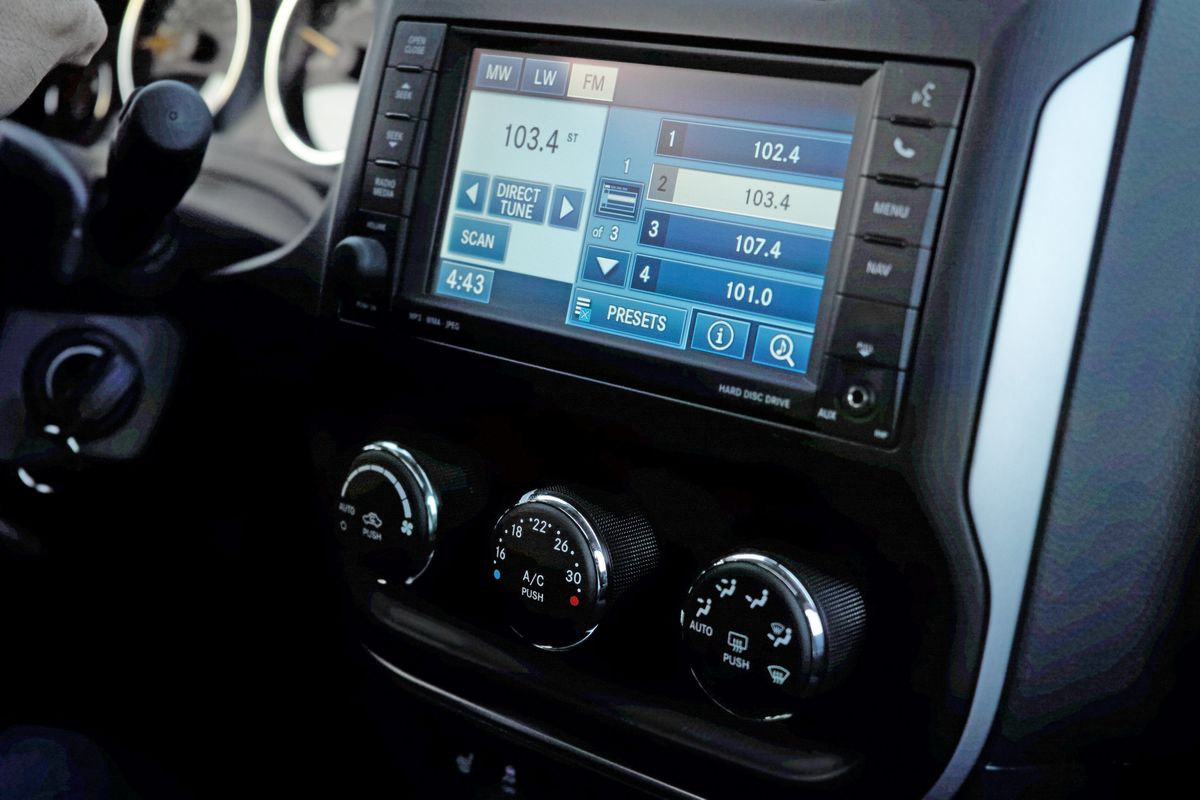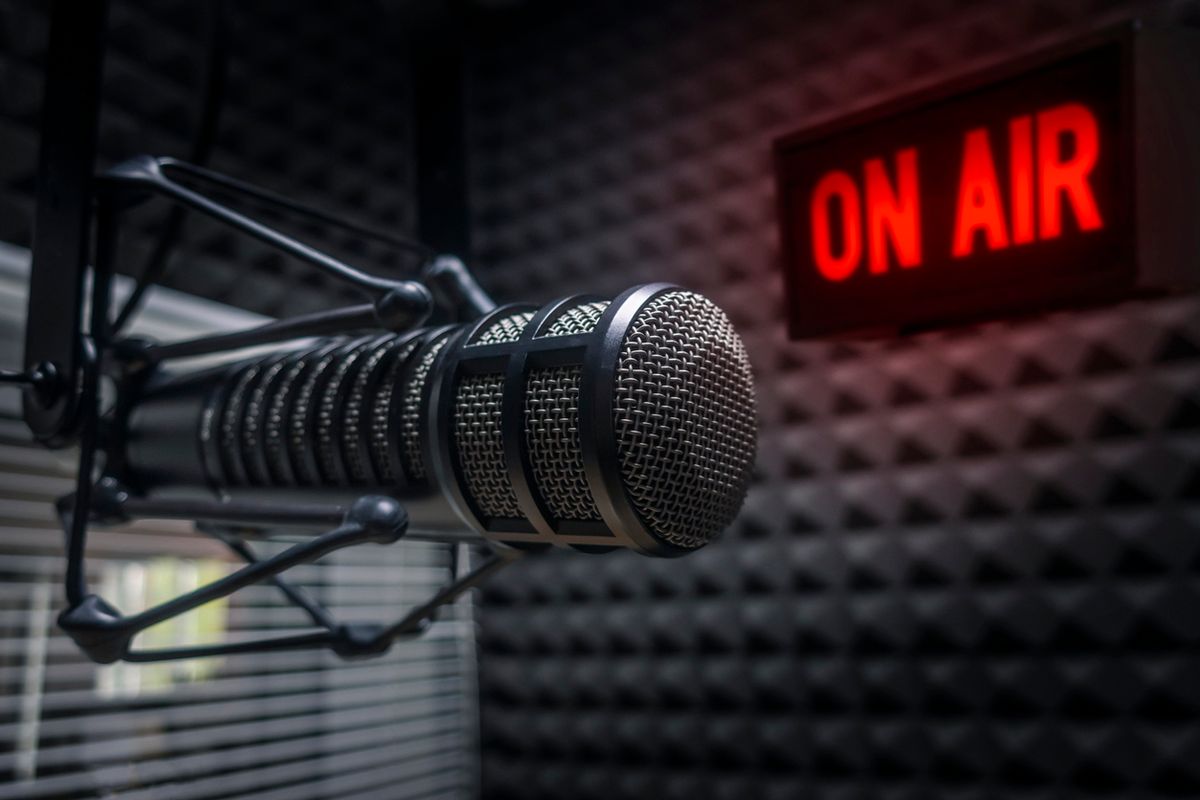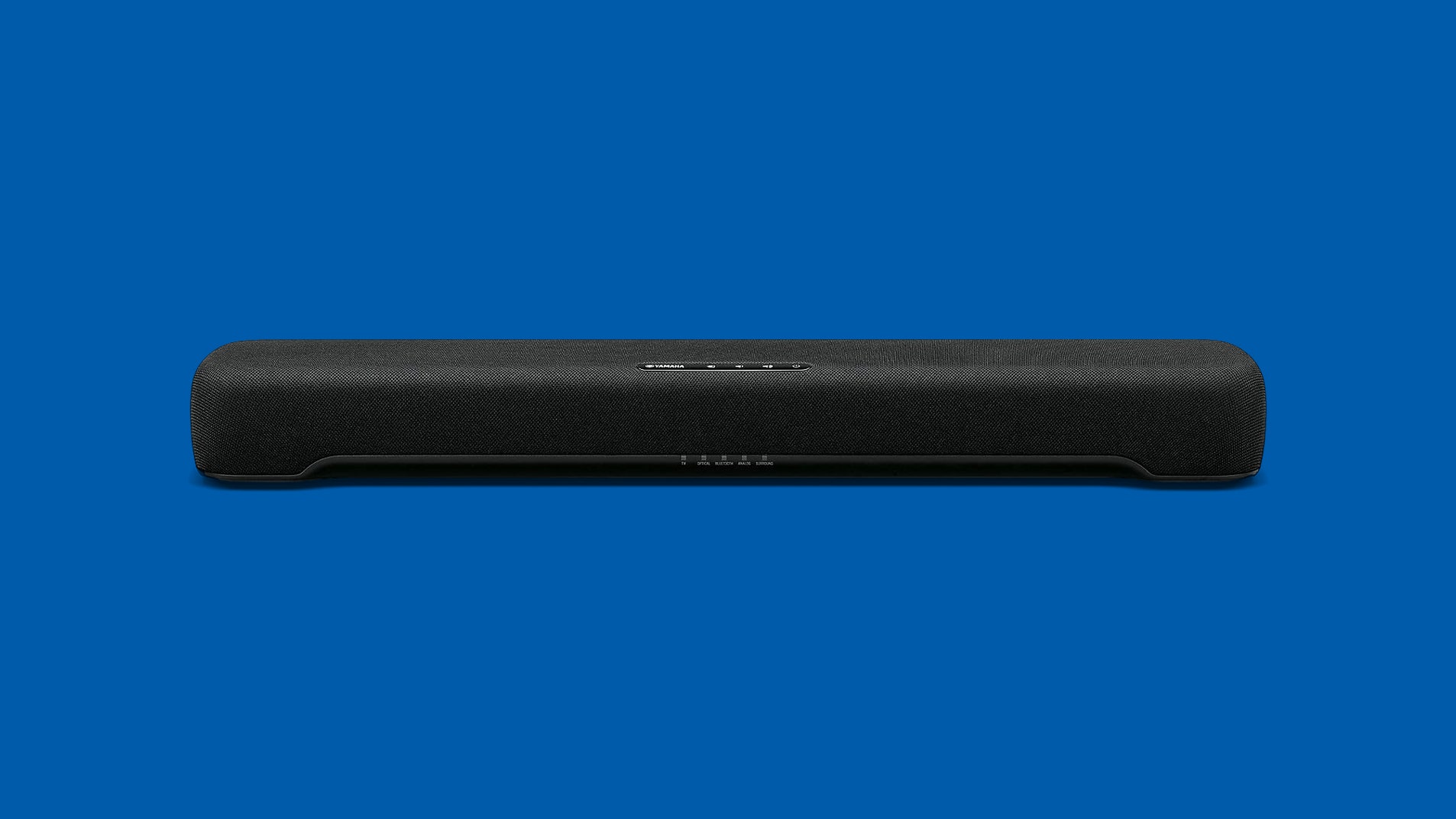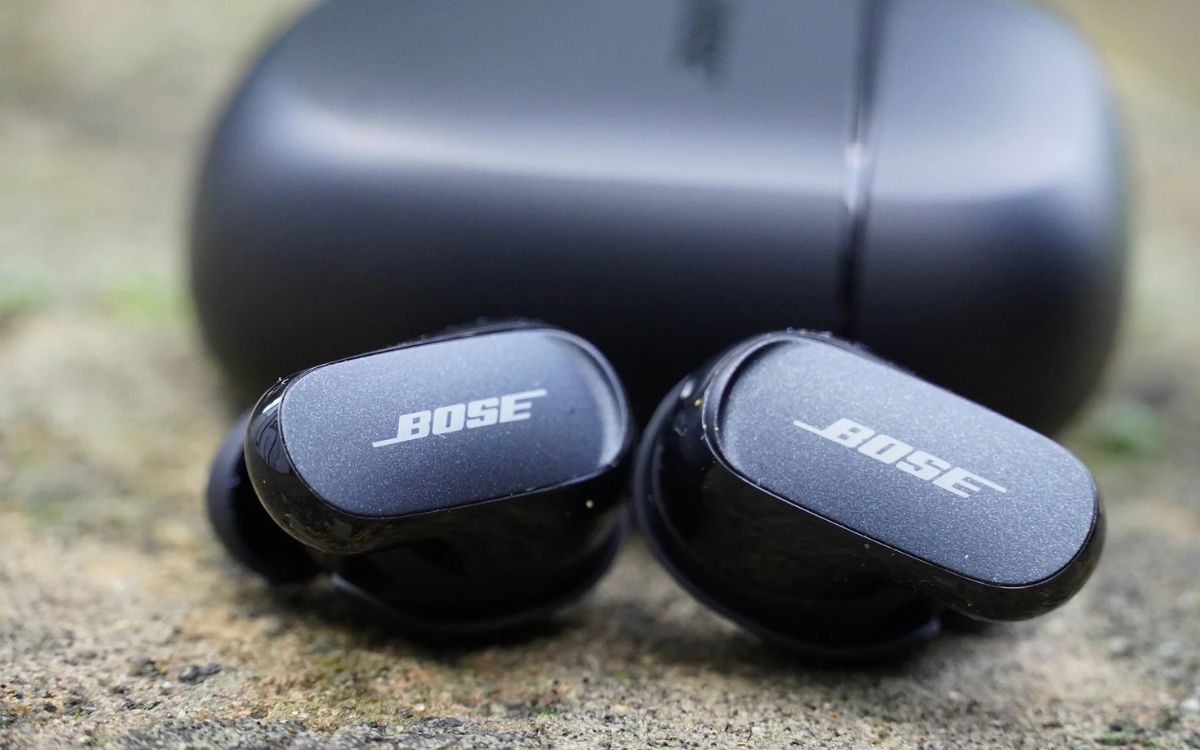Home>Devices & Equipment>Radio>How Much Is A Ham Radio
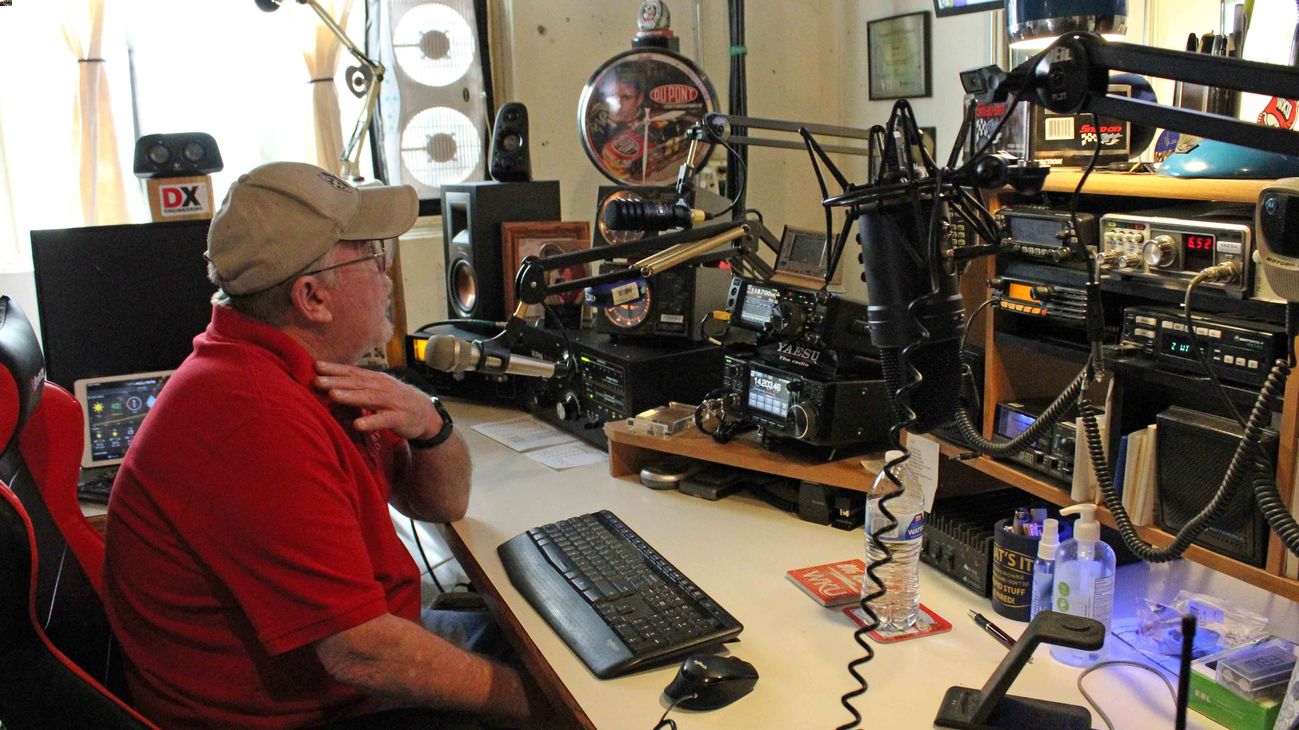

Radio
How Much Is A Ham Radio
Modified: January 22, 2024
Looking to buy a ham radio? Find out the cost of ham radios and get all the information you need to make an informed purchase decision. Discover the best deals on radio equipment today!
(Many of the links in this article redirect to a specific reviewed product. Your purchase of these products through affiliate links helps to generate commission for AudioLover.com, at no extra cost. Learn more)
Table of Contents
Introduction
Welcome to the exciting world of ham radios! If you’re unfamiliar with what a ham radio is, or you’re curious about the cost of owning one, you’ve come to the right place. In this article, we will explore the captivating realm of ham radios, discussing their purpose, functions, and most importantly, their cost.
Ham radios, also known as amateur radios, are devices used for two-way radio communication by licensed operators. Unlike broadcast radios, which have a limited range, ham radios allow operators to communicate with other radio enthusiasts across the globe. This makes them perfect for emergency communication, hobbyists, and those who enjoy exploring the airwaves.
Now, you might be wondering, how much does a ham radio cost? Well, the cost of ham radios can vary greatly, depending on several factors. In this article, we will dive into those factors and explore the price ranges of popular ham radio brands. So, whether you’re considering getting a ham radio or just curious about the cost, sit back and let’s explore the exciting world of ham radios together.
What is a Ham Radio?
A ham radio, also known as an amateur radio, is a communication device used by licensed operators to engage in two-way radio communication. It is different from other forms of communication devices because it allows direct communication between individuals using radio frequencies, without the need for external infrastructure or reliance on commercial networks.
Ham radios provide a unique and diverse range of communication possibilities. Operators can use them for various purposes, including emergency communication, public service events, experimentation, international communication, and as a hobby. They allow users to connect with fellow radio enthusiasts around the world, establishing connections across borders and cultures.
Ham radios offer a wide range of features, which may vary depending on the specific model and brand. These features typically include the ability to transmit over multiple frequency bands, receive signals from different sources, use various modulation techniques, and support advanced signaling protocols. Some ham radios also have built-in digital modes, such as data transmission and voice over internet protocol (VoIP) capabilities.
Becoming a licensed operator is a key requirement to legally use a ham radio. Licensing helps ensure that users understand the rules and regulations for operating a ham radio and have the necessary knowledge to use the equipment responsibly. Licensing requirements may vary from country to country, but generally involve passing an examination to demonstrate proficiency in operating the equipment and understanding the technical aspects of radio communication.
The ham radio community is known for its strong sense of camaraderie and cooperation. Operators often participate in clubs, groups, and events where they can exchange knowledge, discuss techniques, and engage in friendly competition. These interactions contribute to the growth of the ham radio community and encourage continuous learning and improvement.
Overall, ham radios provide a unique and exciting means of communication. They offer a combination of technical proficiency, international connectivity, and a vibrant community. Whether for emergency preparedness, hobbyist pursuits, or global connections, ham radios have a lot to offer to radio enthusiasts around the world.
The Cost of Ham Radios
The cost of ham radios can vary greatly depending on several factors. It’s important to note that ham radios come in a wide range of prices, from budget-friendly options to high-end models with advanced features. The price of a ham radio is influenced by factors such as brand, functionality, features, and overall quality.
At the lower end of the price spectrum, you can find entry-level ham radios that are perfect for beginners or those on a tight budget. These radios typically offer basic functionality and limited features but still provide the core communication capabilities of a ham radio. Entry-level models can start as low as $50 to $100.
On the other hand, high-end ham radios are designed for more advanced users who require advanced features and enhanced performance. These radios often have more power, broader frequency coverage, better filtering options, and additional capabilities. The price for high-end ham radios can range from $500 to well over $1,000.
Mid-range ham radios fall between entry-level and high-end models, offering a balance between functionality and price. These radios provide more features and better performance than entry-level options but are more affordable compared to high-end models. Mid-range ham radios typically range from $200 to $500.
It’s essential to consider your specific needs and requirements when determining how much to invest in a ham radio. If you are just starting and exploring the hobby, an entry-level radio might be the best choice. However, if you have a specific purpose or require advanced features, investing in a mid-range or high-end ham radio may be worth considering.
It is also worth mentioning that the cost of a ham radio does not include additional accessories and equipment. Antennas, power supplies, cables, and other accessories may be necessary for optimal performance and ease of use. The cost of these additional items should be factored into your overall budget.
Remember, the cost of a ham radio is an investment in a hobby or a tool for emergency communication. It is important to balance your budget with the features and quality you desire, ensuring that you get a ham radio that meets your needs and offers a satisfactory user experience.
Factors Affecting the Cost of Ham Radios
The cost of a ham radio can be influenced by several factors. Understanding these factors can help you make an informed decision when considering a purchase. Here are some key factors that can affect the cost of ham radios:
Brand
The brand of a ham radio can play a significant role in determining its price. Well-established brands with a long history of producing reliable and high-quality radios often come with a higher price tag. These brands have built a reputation for excellence and are known for their advanced features and durable construction.
Functionality and Features
The functionality and features offered by a ham radio can greatly impact its cost. Radios with advanced features, such as multiple frequency bands, wide frequency coverage, digital modes, and built-in signal processing capabilities, tend to be more expensive. These additional features can enhance the versatility and performance of the radio, making it more desirable for experienced operators.
Power Output
The power output of a ham radio is another factor that can affect its cost. Radios with higher power output capabilities typically come with a higher price tag. Higher power output allows for extended range and better signal penetration, making them suitable for long-distance communication or operating in challenging environments.
Build Quality
The build quality and durability of a ham radio can impact its cost. Radios made with high-quality materials and robust construction techniques tend to be more expensive. These radios are designed to withstand harsh conditions, making them ideal for outdoor activities or emergency situations.
Research and Development
The amount of research and development invested in designing a ham radio can also contribute to its cost. Manufacturers that invest heavily in developing innovative technologies and improving performance may charge a premium price for their products. These radios often incorporate the latest advancements in radio technology, providing users with cutting-edge features and enhanced user experience.
Market Demand
The demand for certain ham radio models can also influence their cost. Popular and highly sought-after radios may see higher prices due to the limited availability and higher demand. Conversely, less popular or discontinued models may be available at discounted prices.
While cost is an important consideration, it is equally important to evaluate the features and functionality that align with your specific needs. Assessing these factors will help you determine the right balance between cost and performance when selecting a ham radio that suits your requirements and budget.
Popular Ham Radio Brands and their Prices
When it comes to ham radios, there are several popular brands that are known for their quality, reliability, and performance. Let’s take a look at some of these brands and their price ranges:
1. Yaesu
Yaesu is a well-respected brand in the ham radio community, offering a wide range of radios for all skill levels. Their entry-level models, such as the Yaesu FT-65R, can be found in the $100 to $200 price range. Mid-range models, like the Yaesu FT-450D, typically range from $500 to $700. For advanced users, Yaesu offers high-end options like the Yaesu FTDX-101D, which can cost over $3,000.
2. Icom
Icom is another popular brand known for their reliable and feature-rich ham radios. Entry-level models, such as the Icom IC-2300H, can be found in the $200 to $300 price range. Their mid-range options, like the Icom IC-7100, typically range from $800 to $1,000. For seasoned operators looking for top-of-the-line radios, Icom offers high-end models like the Icom IC-7851, which can cost over $10,000.
3. Kenwood
Kenwood is a renowned brand that offers a range of ham radios for various applications. Their entry-level models, such as the Kenwood TM-281A, can be found in the $150 to $250 price range. Mid-range models, like the Kenwood TS-480HX, typically range from $900 to $1,200. Kenwood also offers high-end options like the Kenwood TS-990S, which can cost over $6,000.
4. Baofeng
Baofeng is a budget-friendly brand known for its affordable ham radios. Entry-level models, such as the Baofeng UV-5R, can be found for under $50. These radios offer basic functionality and are popular among beginners or those on a tight budget.
5. Alinco
Alinco is known for its quality and affordable ham radios. Their entry-level models, such as the Alinco DJ-500T, can be found in the $150 to $200 price range. They offer a good balance of features and affordability for new and intermediate-level operators.
It’s important to keep in mind that the prices mentioned above are approximate and can vary based on factors such as the specific model, included features, and regional availability. Additionally, prices may change over time due to market fluctuations and new product releases.
When selecting a ham radio, it’s recommended to carefully review the specifications, features, and user reviews to ensure it meets your needs and preferences within your desired price range.
Purchasing Options for Ham Radios
When it comes to purchasing a ham radio, there are various options available to suit different preferences and budgets. Here are some common purchasing options for ham radios:
Retail Stores
One of the traditional options is to visit a ham radio specialty store or an electronics retailer. These physical stores often have knowledgeable staff who can provide advice and guidance based on your needs. You can compare different models, get hands-on experience with the radios, and make an informed decision. However, keep in mind that the prices at retail stores may be higher than other options due to overhead costs.
Online Retailers
Online shopping has become increasingly popular for purchasing ham radios. There is a wide range of reputable online retailers that specialize in ham radio equipment. These websites often offer a vast selection of models, competitive prices, and detailed product descriptions. Online shopping allows for convenient browsing, easy comparison of features and prices, and the ability to read customer reviews before making a purchase. Just be sure to check the reputation of the online retailer and ensure they offer secure payment methods.
Ham Radio Clubs and Swap Meets
Ham radio clubs and swap meets are great places to find used and vintage ham radios. Ham radio enthusiasts often sell or trade their equipment within these communities. Attending a ham radio club meeting or swap meet gives you the opportunity to interact with fellow operators, explore a variety of radios in person, and potentially find good deals on pre-owned equipment. It’s worth noting that buying second-hand radios may require extra caution, as you need to thoroughly inspect the condition and functionality of the equipment.
Online Auctions and Classifieds
Online auction sites and classified ads can be another avenue for finding ham radios. Platforms like eBay or classified websites often have listings from individuals selling their used ham radios. These platforms offer a range of options, including both auctions and fixed-price listings. Again, exercise caution when purchasing from individuals and ensure you have the necessary information about the condition of the radio before making a final decision.
Ham Radio Expos and Events
Ham radio expos and events, such as Hamvention or Radiosport, are gatherings where manufacturers, retailers, and enthusiasts come together. These events provide an opportunity to see and test the latest ham radio equipment, often at special expo prices. Attending these expos not only allows you to explore a wide range of radios but also provides the chance to attend workshops, participate in demonstrations, and network with other enthusiasts in the community.
Each purchasing option has its own advantages and considerations. It’s essential to research and weigh your options, considering factors such as pricing, warranties, return policies, and customer support. By carefully evaluating your needs and doing your due diligence, you can find the best purchasing option that suits your budget and ensures a satisfying ham radio experience.
Is it Worth the Cost?
Whether or not a ham radio is worth the cost ultimately depends on your individual interests, needs, and budget. Here are some factors to consider when determining if investing in a ham radio is worthwhile:
Passion for Radio Communication
If you have a genuine passion for radio communication, exploring different frequencies, and connecting with other operators around the world, then owning a ham radio can be a highly rewarding experience. The ability to engage in long-range communication and be part of a vibrant community of radio enthusiasts can provide countless hours of enjoyment and fulfillment.
Emergency Preparedness
Ham radios excel in emergency communication scenarios. They operate independently of traditional communication infrastructure and can be highly reliable during natural disasters or other emergencies. If you live in an area prone to severe weather events or have a personal interest in emergency preparedness, a ham radio can be a valuable tool for staying connected and assisting others in times of need.
Hobby and Skill Development
For many, ham radio operation is a hobby that offers continuous learning and skill development opportunities. From obtaining the necessary license to understanding radio theory and experimenting with different antennas and modes, ham radio provides a platform for personal growth and expanding technical knowledge. If you enjoy diving deep into a hobby and are enthusiastic about learning new things, the investment in a ham radio can be a worthwhile endeavor.
Community and Networking
Being part of the ham radio community can offer a sense of belonging and the opportunity to connect with like-minded individuals who share the same interests. Participating in clubs, events, and contests can provide networking opportunities, mentoring relationships, and valuable friendships. If you value community and enjoy being part of a supportive network of radio enthusiasts, then the cost of a ham radio can be justified by the social connections you make.
Personal and Practical Applications
Aside from the recreational and hobbyist aspects, ham radios have practical applications as well. They can be used for activities like public service events, providing communication support during marathons or parades, or volunteering as a backup communication system in emergency situations. If you have a specific practical use for a ham radio, such as participating in public service or providing communication in remote areas, then the investment may be well worth it.
Ultimately, the worthiness of the cost depends on your personal goals, interests, and priorities. Consider what you hope to gain from owning a ham radio and evaluate how it aligns with your budget and lifestyle. Remember to research different models, consider used options, and consult with experienced operators to make an informed decision that provides the most value for your investment.
Conclusion
Ham radios offer a captivating world of communication, adventure, and community. They provide a unique way to connect with people from all over the world, engage in emergency communication, explore different frequencies, and expand your technical knowledge.
When considering the cost of a ham radio, it’s important to remember that they come in a wide range of prices, from budget-friendly options to high-end models with advanced features. Factors such as brand, functionality, features, and build quality can all influence the cost of a ham radio.
Popular ham radio brands like Yaesu, Icom, Kenwood, Baofeng, and Alinco offer a variety of options at different price points to cater to the needs of both beginners and advanced operators. Whether you’re looking for an entry-level radio to start your ham radio journey or a top-of-the-line model with advanced features, there are options available for every budget.
Depending on your preferences, purchasing options for ham radios include retail stores, online retailers, ham radio clubs and swap meets, online auctions and classifieds, as well as ham radio expos and events. Each option has its own benefits, so it’s important to carefully research and consider which avenue is the most suitable for your needs.
In the end, whether a ham radio is worth the cost is a personal decision. If you have a passion for radio communication, a desire to contribute to emergency preparedness, a fondness for technical hobbies, a thirst for community and networking, or a specific practical application, then the investment in a ham radio can be highly rewarding.
Remember, the cost of a ham radio is an investment in an exciting and versatile hobby or an essential tool for emergency communication. By exploring the options, considering your needs, and making an informed decision, you can embark on a fulfilling journey into the world of ham radio.

